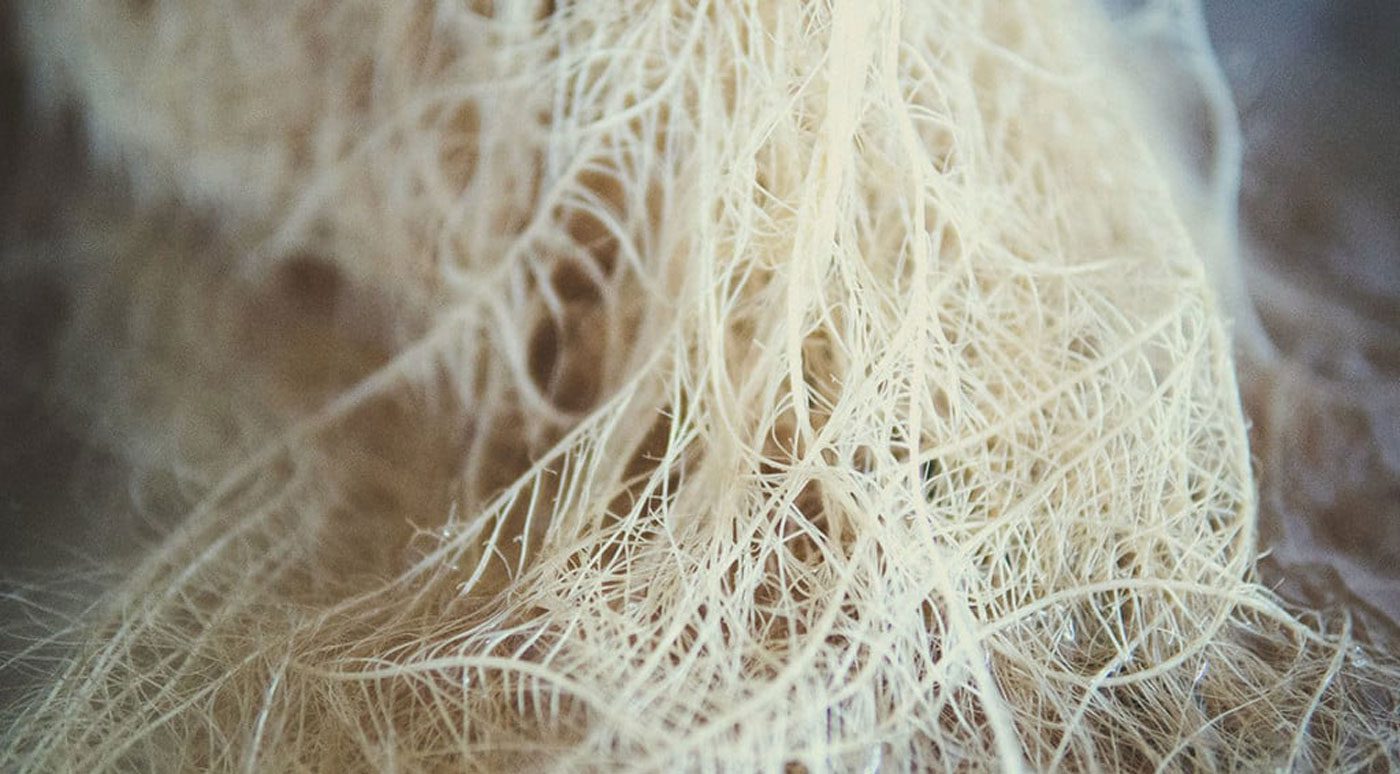Increasing Oxygen in the Root Zone • Grow Magazine
Keeping the Roots Happy: The Importance of Oxygen
Most growers know about the importance of carbon dioxide (CO2) to plant growth. Very briefly, the plants mine the gas from the air, of which it comprises about .04%. As the percentage increases or decreases, plants’ growth rate follows, increasing or decreasing. For this reason, growers often enrich the air with CO2 during the lighted period. Plants also use oxygen (O) during their life process. They create the energy for metabolism, which functions day and night, by combining the sugars that they produce during photosynthesis with oxygen. This creates CO2, which is released. During the evening, the plants use only O, so the percentage of O in a closed space goes down. Even so, there is no shortage of O for the plant during respiration since it comprises about 21% of the air. The roots also respire and use oxygen to convert sugar to energy, releasing CO2 As long as they have access to sufficient O, they remain healthy. Lack of it creates stress conditions and promotes growth of organisms that attack the stressed roots. This can be a serious issue under some conditions. Understanding the problem is a key to solving it. — Ed Rosenthal
Passive approaches capitalize on how roots get their oxygen. Oxygen naturally diffuses through the air spaces of a porous growing medium for soil. Using a growing medium with particles large enough to leave space for air once the soil drains is essential for allowing the passive movement of oxygen-containing air through the root zone. Proper management of the irrigation schedule is crucial in optimizing oxygen availability for the roots.
Growing plants in fine-grain or compacted soil or a growing medium that has low porosity leaves little breathing room for the roots. Cannabis suffers from a waterlogged soil because it is more likely to be hypoxic, since the pores in the soil are filled with water. Irrigating with low-oxygen water without allowing the soil to dry out between watering is the worst scenario, since oxygen never gets the chance to diffuse through the pores of the growing medium. The water being introduced into the root zone is not bringing oxygen with it. Allowing for the growing medium to dry out a bit between irrigations promotes oxygen availability in fine-textured soils.
Irrigating with oxygen-saturated water is another way to passively introduce oxygen to the roots. Waterlogged soil is not harmful to the plants as long as the root zone has plenty of oxygen. Plants can be irrigated continuously as long as the nutrient solution is saturated with oxygen. The theory behind growing in aquaponic production is the roots are constantly being showered with nutrient solution that is always exposed to air. The high exposure to oxygen allows for constantly saturated water raining down on the roots.

Increasing oxygen concentrations in water is not difficult to do. There is so much oxygen available in the atmosphere that actively bubbling air through water in a storage tank with an aquarium pump attached to an air stone is sufficient. A pump-over or cascade can also be used to oxygenate water in a storage tank. A pump creates a spray or jet that splashes back into the water and mixes with the air. This increases the DO saturation. The larger the surface area of air-to-water interaction that occurs, the quicker the water becomes saturated with oxygen. Increasing the dissolved oxygen (DO) concentration in fertigation solutions can be done through several methods.
The simplest is a venturi system. Air is drawn into a flowing liquid so that when a hole is drilled into the pipe and tubing is attached, the water is automatically aerated as it flows. The Mazzei Airjection Irrigation system makes it easy to introduce oxygen-laden air into the water-nutrient solution. Just hook it up to the irrigation line, and it draws air into flowing water automatically. It requires no power and has no moving parts.
Bubbling air through the stock solutions and water storage tanks is one of the best ways to introduce oxygen into the system, as it is inexpensive and easy to maintain. Some air pumps can increase the temperature of the nutrient solution, which should be monitored.
Other than air, there are other products available that increase dissolved oxygen concentrations that also sanitize the water. Ozone (O3) and hydrogen peroxide (H2O2) are strong oxidizing agents that neutralize microorganisms in the water. Both compounds naturally break down to produce oxygen:
Ozone breakdown
2O3 → 3O2
Hydrogen peroxide breakdown
2H2O2 → 2H2O + O2
Constantly running an air pump through stored water is a great way to get the dissolved oxygen concentration of the water to saturation level within a handful of minutes; however, the running of the air pump can start heating up the water. The pump motor’s constant running eventually will warm up, and therefore warm air will be bubbled through the water. Be sure to monitor water temperatures.
Ozone has a half-life of about 20 minutes at room temperature. It is an extremely powerful oxidizer and has strong antimicrobial properties. Ozone can be produced on-site with an ozone generator. Ozone generators can be used to bubble ozone through water. Water should be ozonated at night in storage tanks and allowed sufficient time to break down before being applied to the plants. High-concentration ozone in the nutrient solution can oxidize nutrients and potentially damage roots.
Ozone is dangerous to breathe. It is such a strong oxidizer that it destroys the plasma membrane of pathogens, but it also can damage the lungs if breathed in. Ozone exposure can cause chest pain, coughing, shortness of breath, and sore throat. Ozone does have a distinct aroma, so if it is detected, leave the area immediately. Short exposures typically do not cause irreparable damage. If ozone is bubbled through water storage tanks, it should be done at night when people are not around. Hydrogen peroxide also has oxidative properties, although nowhere near as strong as
ozone. Hydrogen peroxide should be diluted down to a maximum of 1% of the water volume. (It comes in various percentages from 3% to about 30% solution.) It also breaks down quickly, so it does not stay oxidative for too long. Exposure to light breaks it down fast, so it should be stored in an opaque container in a dark location. Much like ozone, hydrogen peroxide has strong antimicrobial properties, which means that it, too, can damage root tissue if exposed at too high of a concentration. Neither ozone or hydrogen peroxide leaves a residue, and both break down into molecular oxygen that is available to the roots.
Ozone and hydrogen peroxide neutralize pathogenic bacteria and fungi; however, they also can eliminate beneficial microbes in the root zone. A robust and diverse microbial community in the root zone is beneficial to the health of the plant. When using ozone and hydrogen peroxide to oxygenate the water, it is best to wait before applying so that the ozone and hydrogen peroxide molecules have broken down.
How to Tell When the Root Zone Needs More Oxygen
In the absence of oxygen, roots die off. If hypoxia is suspected, use a soil moisture meter. If the plant can be popped out of its container, the roots can be inspected. Healthy roots are typically white in color and fuzzy with root hairs near their growing tips. In some water culture systems, no root hairs are present. Slimy, brown roots are unhealthy roots; however, some staining from soil, planting media, or nutrients and additives can be normal.
Anaerobic bacteria flourish when a root zone is low in oxygen. These microbes produce ammonia-smelling compounds. Musty or acrid smells are usually indicative of persistent low-oxygen in the root zone.



